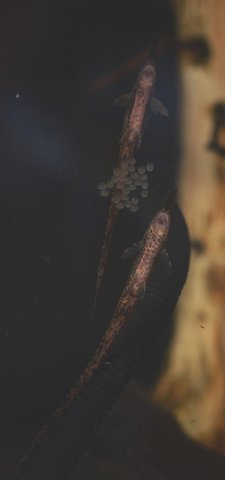Page 1 of 1
Feeding and reproductive biology of Farlowella vittata
Posted: 15 Dec 2012, 12:36
by racoll
García-Alzate et al. 2012. Biología alimentaria y reproductiva de
(Siluriformes: Loricariidae) en la cuenca del río Güejar, Orinoquía, Colombia.
Rev. Biol. Trop. 60(4):1873-1888.
Article in Spanish, but abstract in English. Thanks to
twitter.com/SeriouslyFish for spotting this.
Re: Feeding and reproductive biology of Farlowella vittata
Posted: 21 Apr 2016, 07:06
by bekateen
The link above for this paper appears to be broken. Here are active links to the web page and pdf file of this paper:
http://www.scielo.sa.cr/scielo.php?scri ... 2000400038
http://www.scielo.sa.cr/pdf/rbt/v60n4/a38v60n4.pdf
Re: Feeding and reproductive biology of Farlowella vittata
Posted: 21 Apr 2016, 08:01
by Mol_PMB
Ill have to have a read of this and see if my twiglets are doing it right ;)
I'm getting over-run with them at the moment.
Re: Feeding and reproductive biology of Farlowella vittata
Posted: 21 Apr 2016, 11:12
by dw1305
Hi all,
I wonder how the quoted dissolved oxygen levels were measured? They seem really low (you can't estimate %DO without a known temperature), but it is going to be less than 25% saturation during high water.
Dissolved oxygen values were 6.2mg/L during low water and 2.7mg/L during high water phase.
cheers Darrel
Re: Feeding and reproductive biology of Farlowella vittata
Posted: 21 Apr 2016, 13:44
by bekateen
dw1305 wrote:Hi all,
I wonder how the quoted dissolved oxygen levels were measured? They seem really low (you can't estimate %DO without a known temperature), but it is going to be less than 25% saturation during high water.
Dissolved oxygen values were 6.2mg/L during low water and 2.7mg/L during high water phase.
cheers Darrel
Time to brush up on your Spanish!

Cheers, Eric
Re: Feeding and reproductive biology of Farlowella vittata
Posted: 21 Apr 2016, 18:01
by Mol_PMB
Mine became sexually mature at a much smaller size than their observations (<100mm SL both sexes).
I have fed mostly algae, but also phytoplankton (nannochloropsis) and 'zooplankton' (in the form of microworms and BBS) which they seem to enjoy.
Re: Feeding and reproductive biology of Farlowella vittata
Posted: 26 Apr 2016, 07:13
by Mol_PMB
Sort of on-topic, I came down this morning to find this:

- Farlowella vittata, 14-month old pair spawning
and this:

- Farlowella vittata, adult male guarding new spawn
